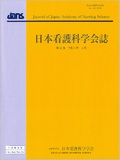Japanese
English
- 販売していません
- Abstract 文献概要
- 参考文献 Reference
要旨
目的:在宅医療提供体制が整った環境下における終末期がん患者の在宅看取りの関連要因を明らかにする.
方法:A法人の終末期がん患者の訪問診療記録を用いた後ろ向き調査を実施した.患者の年齢,性別,疾患名,主介護者の属性,在宅医療開始時の患者及び家族への病名告知と余命告知の有無,患者の在宅療養継続の希望,そして在宅医療開始後死亡までの期間を調査し,在宅看取りを従属変数としてロジスティック回帰分析を行った.
結果:分析対象933名.在宅看取りに関連したのは,在宅医療開始時の在宅療養継続への強い希望(オッズ比3.28 95%信頼区間2.30〜4.68,p<.01)と,在宅医療開始後死亡までの期間が30日以内(オッズ比1.51 95%信頼区間1.13〜2.03,p<.01)であった.
結論:在宅看取りの要因は,在宅療養継続の強い希望と,在宅医療開始後死亡までの期間が30日以内であった.
Objective: We sought to demonstrate the factors involved in the death at home of terminal cancer patients receiving home palliative care within a well-established home medical care system.
Methods: We conducted a retrospective study using home medical care records of deceased terminal cancer patients who had started receiving house calls by Corporation A, and who had also received home nursing care. Study variables were patient age, sex, disease name, primary carer attributes, whether or not patients and their family members had been informed of the patient's disease and prognosis at commencement of house calls, whether or not patients wished to continue receiving home care, and time from commencement of house calls until death. After collecting the study data, we performed logistic regression analysis using death at home as the dependent variable.
Results: The study population consisted of 933 patients. Our analysis showed that factors enabling death at home were the patient's wish to continue receiving home care at the commencement of house calls (odds ratio, 95% confidence interval: 3.28, 2.30-4.68, p < .01), and a ≤30-day time period from the commencement of house calls until death (odds ratio, 95% confidence interval: 1.51, 1.13-2.03, p < .01).
Conclusion: We found that the factors involved in the death at home of terminal cancer patients within a well-established home medical care system are the patient's wish to continue receiving home care at the commencement of house calls, and a ≤ 30-day time period from the commencement of house calls until death.
Copyright © 2021, Japan Academy of Nursing Science. All rights reserved.


